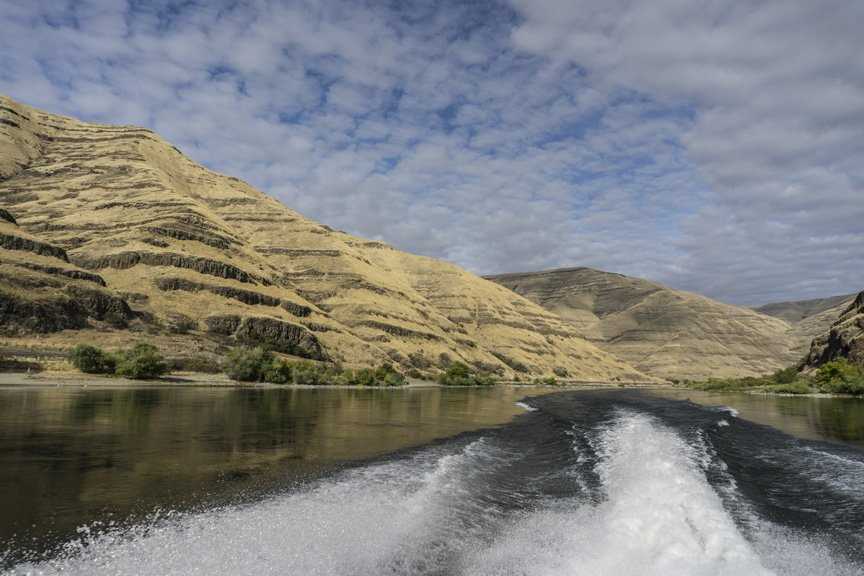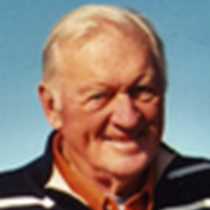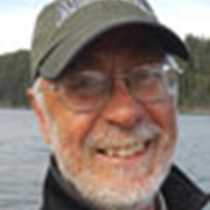Named for Captain William Clark, Clarkston arose from gold rush days as Jawbone Flats, later called Vineland. Early morning the National Geographic Sea Bird tied up in this river town where guests boarded jet boats for an exploration of the upper Snake River and fabled Hell’s Canyon. After cruising under the Blue Bridge, which separates Clarkston from Lewiston, Idaho, the boats passed the small riverside town of Asotin, looming Swallow Rock, and entered brown, rolling hills leading to the perpendicular basalt walls of the canyon itself.
After an exciting run through rapids, around cataracts, and skirting rock-strewn shores, the jet boat captain announced that we had travelled 50 miles from where the National Geographic Sea Bird was docked. He also pointed out the mouth of our nation’s longest open-water wild river, the Salmon—known in local lore as the “River of No Return.” While describing the canyon’s geological features, the skipper noted that we were at the entrance of the narrowest gorge in North America (7,900 feet from He Devil Peak to the river floor).
Hearty victuals were served at a river ranch owned by the Nature Conservancy. After lunch, guests wandered through nearby orchards, mixing with semi-tame deer and wild turkeys. Later, on the return journey, guests saw bighorn sheep (rams), great blue heron, a bald eagle standing on the beach, and a clutch of black crows atop a large boulder.
Late afternoon, soon after the jet boats returned to Clarkston, over 30 guests boarded a motor coach to visit Nez Perce National Park near the former Henry Spalding missionary town of Lapwai (Nez Perce for “place of the butterflies”).
Following dinner, a program called “Great Escapes” was presented, highlighting other Lindblad-National Geographic expeditions.









